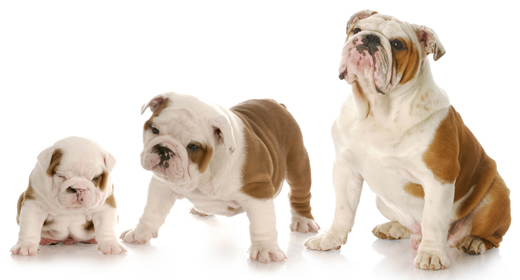

Kehamilan dan menyusui bukan hanya menyebabkan banyak perubahan dalam tubuh anjing, tetapi juga perubahan gaya hidupnya. Jika anjing Anda hamil atau menyusui, berikan perhatian khusus pada perubahan kebutuhan nutrisinya saat ia mengandung, melahirkan, dan menyusui anak-anaknya.
Hal yang perlu Anda ketahui tentang kesehatan anjing Anda saat ia dewasa dari usia 1 hingga 8 tahun:
Anjing Anda tumbuh dewasa. Louise Murray, DVM, Direktur ASPCA's Bergh Memorial Animal Hospital di New York City dan penulis Vet Confidential (Ballantine, 2008), memberi saran cara merawat anjing Anda dalam kondisi prima.
Kesehatan Anjing Dewasa: Tindakan Pencegahan. Walaupun anjing Anda tampak bugar, temui Dokter Hewan Anda setahun sekali untuk pemeriksaan. 'Sebagian besar masalah kesehatan lebih mudah ditangani dan lebih murah jika Anda mengetahuinya lebih awal,' kata Murray. Terlebih lagi, Dokter Hewan Anda dapat mendeteksi masalah yang mungkin Anda lewatkan. Anda juga tetap dapat mengikuti informasi terbaru tentang booster vaksinasi.
Kesehatan Anjing Dewasa: Obat Kutu, Kutu, dan Cacing Hati. Tetap gunakan obat-obat pencegahan. Bicaralah dengan Dokter Hewan Anda jika Anda pindah atau jika gaya hidup Anda telah berubah untuk memastikan Anda menggunakan produk yang paling cocok untuk anjing Anda.
Kesehatan Anjing Dewasa: Diet. Hewan peliharaan Anda membutuhkan makanan yang tepat untuk kesehatan yang optimal. Tanyakan kepada Dokter Hewan Anda untuk menyesuaikan jenis dan jumlah makanan yang dimakan anjing Anda.
Kesehatan Anjing Dewasa: Kesehatan Gigi. Jika Anda belum melakukannya, biasakan membersihkan gigi anjing Anda setiap hari. 'Hewan yang terkena gingivitis atau radang gusi bisa berakhir dengan masalah ginjal dan jantung,' jelas Murray. Sikat gigi anjing Anda dengan menggunakan jari dan tangan Anda di sekitar mulutnya. Di toko hewan peliharaan, Anda akan menemukan sikat gigi dan sikat jari serta pasta gigi anjing.
Kesehatan Anjing Dewasa: Penambahan/Penurunan Berat Badan. Ketika anjing Anda menginjak timbangan pada kunjungan tahunannya, kenaikan berat badan (bukan penurunan) lebih mungkin menjadi masalahnya. Makanan biasanya bukan penyebabnya. Hal-hal seperti biskuit dan makanan manusia, yang dia dapatkan . 'Semuanya bertambah,' kata Murray. Seiring bertambahnya usia hewan peliharaan Anda, ia menjadi kurang aktif, yang dapat menyebabkan penambahan berat badan dan sejumlah masalah lain (diabetes, radang sendi, dan masalah pernapasan, misalnya). Tapi ada alasan lain untuk mengawasi timbangan: Penurunan berat badan mungkin menandakan ada masalah kesehatan.